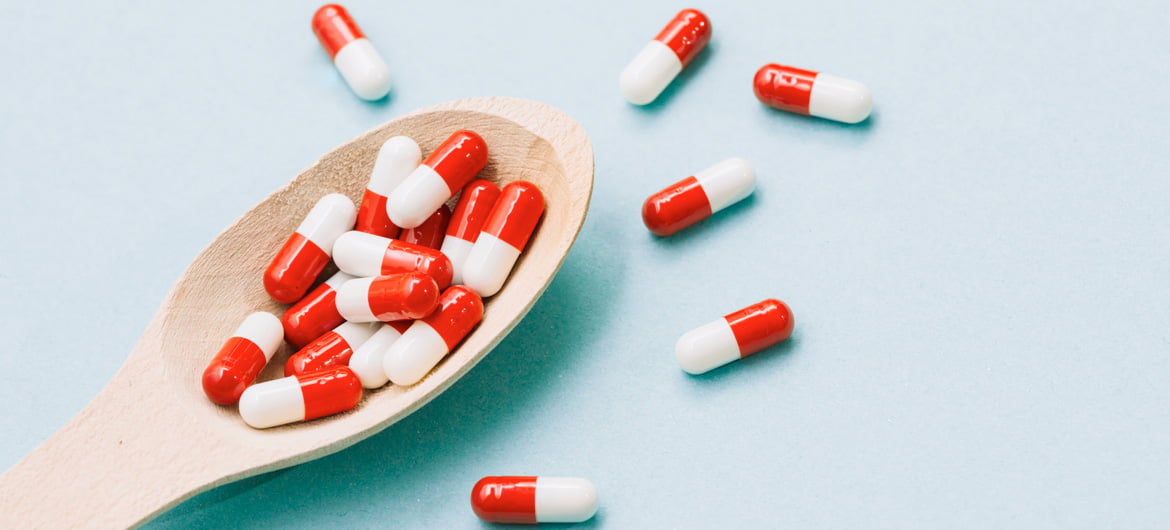1. Introduction:
People require medicines all across the world, and some of those drugs are produced and obtainable to them locally. However, the medicine must be imported from other nations for the remaining 25%.
2. Regulation system of Medical Importation:
Even though the General Agreement on Tariff and Trade, or GATT, has facilitated the globalization of trade, different countries may have their own rules for importing pharmaceutical items. However, through the Trade Facilitation Agreement (TFA), which is likely to be implemented within a few years, more trade liberalization is anticipated for WTO countries shortly.
- The healthcare delivery system requires the utilization of medicinal products like medications, biologicals like vaccines, blood products, and medical devices like in vitro diagnostics. To enhance public health, any nation should guarantee an adequate supply of medical supplies that are secure, effective, of high caliber, and reasonably priced.
- In addition, medical items must adhere to the required criteria to safeguard and advance public health. Globally, all nations are urged to have efficient, effective, and functional national regulatory agencies (NRAs). However, the ability to carry out fundamental regulatory tasks could be improved in at least 30% of the current NRAs.
- After receiving approval from the appropriate NRAs, medical items can be used. Depending on their level of regulatory authority, different NRAs have different standards. The availability of licensed pharmaceuticals is impacted by the regulatory review process because it takes a long time and requires sufficient competent employees.
- Through 11 Port offices spread across the nation, the Central Medicines Standard Control Organization (CDSCO) manages the import and export of drugs in the nation. The following laws and regulations are used by CDSCO to control the production, distribution, import, export, and clinical research of pharmaceuticals in India.
-
- Drugs and Cosmetics Act and its 1945 Rules.
- The Pharmacy Act of 1948
- The Drugs and Magical Remedies Act of 1954
- The Drugs (Prices Control) Order is number, 1995
- India’s medical regulatory system has become more difficult, and the development of new medications can take a year or longer. Acceptable for marketing Constantly evolving rules and laws increase the need for regulatory affairs experts to give current industry requirements for the global marketplace and who can aid pharmaceutical firms in successfully bringing their medical supplying goods to the Indian market.
3. The procedure of Importation of Drugs:
As you are aware, to import any products, the importer’s customs broker or importer directly must complete the essential import papers and customs clearing procedures at the importing country by the relevant importing country’s foreign trade legislation.
To take delivery of imported goods classified as pharmaceutical products, import entry documents, carrier’s documents (Bill of Lading/Airway Bill), commercial invoices, packing lists, certificates of origin, and other required documents are filed, and necessary import procedures are completed. At the time of delivery of imported goods at the destination customs location, necessary information is currently filed online, producing the necessary paperwork.
International trading partners of nations exchange quality standards and are exempt from numerous inspections of the same products for both import and export. However, according to the policies of most industrialized nations, exports of commodities from Least Developed Countries (LDC) must first receive certification from authorized organizations. Therefore, information about such facts can be received from the required government offices of the importing country when importing pharmaceutical products.
- Prior notification to the importing nation: Before the items arrive at the entry port of the importing country, prior notice regarding the import of pharmaceutical products must be lodged in some countries.
- Obtaining government importer registration: For most nations, becoming an importer is restricted to those who have obtained official registration. The relevant country’s Foreign Trade government agency is responsible for issuing such importer authorizations.
- NOC from the drug controller is required to import pharmaceuticals: To import some of the unique commodities falling within pharmaceutical products, medications, medicines, etc., some nations require a no objection certificate from the drug controller of the importing country.
Through the Central Pharmaceuticals Standard Control Organization (CDSCO), which is led by the Drugs Controller General of India (DCG), the Central Government imposes regulatory control over these drugs and cosmetics imported into the nation. The State Drug Control Authorities, which are appointed by the State Government, are largely responsible for controlling the production, sale, and distribution of drugs. The goal of the nation’s drug regulatory system is to guarantee the accessibility of high-quality, safe, and effective medicines, cosmetics, and medical devices that are based on superior scientific research and the finest regulatory procedures. The Drugs and Cosmetics Act of 1940 defines a drug under Section 3. Any medication, cosmetic, or medical gadget may be designated as a helpful drug by the central government by the publication of a notification in the official.
There are three types of Import that are:
3.1 Import of the Registered Drugs:
The Central Government’s appropriate body issues a Certificate of Registration in the required Form 41 for each drug that is registered in India. Any individual who wishes to import a recognized drug must first get an import license from the relevant Central Government authority.
3.2 Import of Unregistered Drugs:
Unregistered drugs are those that are not registered in India; as a result, no import license is provided. It is not possible to bring unregistered drugs into India. However, several drug manufacturers’ associations have given exemptions from the Drugs and Cosmetics Act’s requirement for registration.
3.3 Import of Excipient:
Any drug that is imported likely contains additives that are used as fillers, preservatives, coloring agents, or diluents. The material serves as a carrier or medium for the drug or other active compounds but is not an active ingredient in the drug itself. An excipient is the name of the material that is employed in this way.
4. Quality Assurance of medicine:
Through several chemical and biological processes, the development of science and technology has made it possible for humans to generate a wide range of medications. Contrary to ancient times, the evolution of medicine in the present day involves a wide range of aspects, which has led to increasingly serious problems with quality, safety, and efficacy.Â
Medicine is created with quality in mind during the design, development, and production stages. By adhering to the principles of good manufacturing practices, manufacturers are largely accountable for the quality of the medications they produce (GMP). Distributors, purchasing organizations (purchasers), dispensers, and users are accountable for preserving the quality of a product after it has left the manufacturer’s facilities through appropriate storage, transport, distribution, dispensing, and usage.
4.1 National laboratories for quality assurance in pharmaceuticals:
The government may construct and operate a pharmaceutical quality control laboratory to perform the necessary tests and assays to confirm that APIs, excipients, and pharmaceutical products match the stipulated specifications, typically through the national medicines regulatory authority (NMRA).
Large nations may need several pharmaceutical quality control labs that abide by national law; as a result, suitable measures should be in place to oversee their adherence to a quality management system. In addition, the lab or labs collaborate closely with the NMRA during the marketing authorization and post-marketing surveillance processes.
An NMRA functioning in concert with its inspection services is effectively supported by a national pharmaceutical quality control laboratory. Therefore, the resulting analytical results should precisely represent the characteristics of the samples evaluated, allowing accurate judgments regarding the caliber of the medication samples examined, as well as providing a sufficient foundation for any further administrative rules and legal action.
Typically, national pharmaceutical quality control laboratories include two different kinds of activity:
- Testing for API compliance, pharmaceutical excipients, and pharmaceuticals using “official” techniques, such as Pharmacopoeial techniques, verified analytical techniques, and the appropriate government authorities, the manufacturer, and marketing approval or approved analytical methods created by the lab, as well
- Investigational testing of dubious, prohibited, or fake drugs or items submitted to medicine inspectors, customs officials, or police.
5. Identification of Unsafe drugs:
The FDA has examined medicines before approving them for use in the US to ensure their quality, safety, and efficacy. As a result, the medicine supply in the United States is one of the safest in the world. To help ensure that the domestic drug supply is secure, federal and state legislation exists in the United States that establishes a “closed” system for the distribution of drugs. The FDA is steadfast in its efforts to safeguard the American drug supply against fakes and other inferior medications.
Medicine that is illegal or counterfeit is phony and could be dangerous to your health. Illegal online sales are one method that consumers in the United States could be exposed to potential counterfeit pharmaceuticals. By only buying medications from US state-licensed pharmacies, Americans may safeguard themselves and their families. The FDA is actively removing illicit products that are being peddled online.
FDA takes reports of suspected forgeries seriously, and it is collaborating with other government agencies and the corporate sector to fight against it to safeguard the country’s drug supply.
Since counterfeit medications are close copies of the real thing, it can be challenging for both authorities and consumers to spot them. In addition, drugs of poor quality may have some therapeutic benefits, but their active ingredient is present in lower concentrations.
The goods that require the most attention, according to Interpol, are:
- COVID-19-related goods and medicines, including vaccines, coronavirus detection kits, disinfectants and medications for malaria, and disposable surgical masks.
- Medicines for conditions like cancer, malaria, and HIV, among others.
- Drugs are used to treat erectile dysfunction or help people lose weight.
- Medical equipment includes syringes, contact lenses, condoms, or radiation equipment.
- Purchase from reputable stores with visible authenticity certificates. Avoid buying drugs from unreliable markets or websites. The national governing agency for medicinal products publishes a list of authorized dispensaries, which anyone can review.
- Buying only medications that a doctor has recommended is crucial. Make sure a prescription is required if you shop online. Websites that provide a pharmacist’s contact information or suggestions.
- It’s crucial to only purchase medications that a doctor has recommended. Make sure the website requests a prescription if you shop online. Websites that offer prescriptions based on surveys or that list a pharmacist’s contact information should be avoided.
- Comparing prices with similar products bought from well-known websites is a good idea. It is probably false if the medication is substantially less expensive.
- Examine the package’s condition and look for grammatical or spelling problems.
- Verify that the manufacturing and expiration dates on the packaging’s exterior and interior are identical.
- Check that the medication appears as expected and exhibits no color changes, deterioration indicators, or odd scents.
- Consult your doctor immediately if you think the drug isn’t working.
6. Analysis of the Importation rate of drugs from different countries:
China has been one of the top countries from which drugs are imported into the US for the past ten years, with Mexico and India competing in 2nd and 3rd position, depending on the year.
To demonstrate how certain sources have misrepresented Ireland as the primary source of imported medicine into the United States, we also provide important data for the same period calculated based on the value of imported medicine.
- China, India, and Mexico are the three largest importers of pharmaceuticals in terms of volume in 2019. Germany, Canada, Italy, Israel, the United Kingdom, Spain, and Ireland round out the top 10 countries in that order.
- However, according to value, Germany, Ireland, and Switzerland are the top three countries for importing pharmaceuticals in 2019. The remaining top 10 countries are India, Italy, Belgium, Canada, Denmark, Japan, and the United Kingdom.
- The data set of some medications reflects the high prices companies use to protect the monopoly patents. But, along with it, tax-avoidance methods are also used by pharmaceutical corporations. This includes corporate “inversions” by some businesses, in which businesses move their legal “home” to nations that have lower tax rates and, after that, charge the legal organizations in their old base countries hefty licensing fees that may then be written off as business expenditure on their tax returns.
7. Credible Pharma-Manufacturing companies:
7.1 Good Manufacturing Practice:
A good manufacturing practice (GMP) method is used to guarantee that goods are consistently manufactured and monitored by quality standards. In addition to being a health risk, low-quality medicines cost both governments and individual customers money. Unintentionally added harmful chemicals may be found in low-quality medications. Medication will only work as intended therapeutically if it contains little to no of the advertised component. It is intended to reduce any production-related risks associated with pharmaceuticals that cannot be avoided through testing the finished product.
The main risks include unanticipated product contamination, which can harm health or even death; inaccurate labeling on containers, which could result in patients receiving the wrong medication; and an insufficient or excessive amount of active ingredient, which can lead to ineffective treatment or negative effects. GMP includes all production areas, including raw materials, space, tools, employee training, and personal hygiene. Every process that can impact the final product’s quality requires specific, defined procedures.
7.2 Pharmaceutical Import-Export opportunity:
Most nations only permit the sale and import of pharmaceuticals produced by internationally recognized GMP standards. Governments can encourage the export of pharmaceuticals from their nations by requiring GMP for all pharmaceutical production and by providing inspectors with GMP training.
8. Ethical and Legal safety of Imported Drugs:
8.1 The Central Government’s Prohibition Power:
Every medicine may not be imported if the central government determines that:
- Any risk to humans or animals exists when using such a medicine.
- The medicine doesn’t have the advertised therapeutic benefits.
- Ingredients in medicine or cosmetic are present in such a quantity that there is no medical need for them. An official gazette notice could be used to pass such a directive.
8.2 Infractions:
Failure to comply with this requirement is punishable under the following provisions:
- Importing contaminated medications is punishable by a maximum three-year prison sentence and a fine of 5,000 rupees.
- The importation of any substance prohibited by section 10 is punishable by a term of imprisonment of up to six months and a fine of up to 5,000 rupees.
- Importing any substance violating a notification issued under section 10A is punishable by three years in prison and a fine that might reach Rs. 5,000.
9. Conclusion:
Numerous steps are required to facilitate the delivery of medications to the general population because import and export regulations in every country, including India, are strict and include difficult reviewing and registration procedures. The Drug and Cosmetic Rules (1945) set forth several procedures for obtaining a drug’s approval for importation or exportation by humans or animals within the nation. The Drug and Cosmetic Act and Rules (1945) make several procedures quite explicit in this regard. However, it can be difficult to follow these rules exactly to adhere to the regulations. India’s regulatory authority, CDSCO, publishes rules on the processes and regulations for import and export.
The status of the drug that needs to be imported or exported determines a significant degree of variation in the requirements and processes. Unlike pharmaceuticals that have already received approval, unapproved drugs typically have stricter import/export regulations. Therefore, it is constantly necessary to draught new regulations or alter current ones to make drug importation more user-friendly, quick, transparent, and strict all at once. Therefore, any amendment that aims to increase the country’s patients’ access to life-saving medications quickly and without compromising the chance of violation should be viewed favorably.



